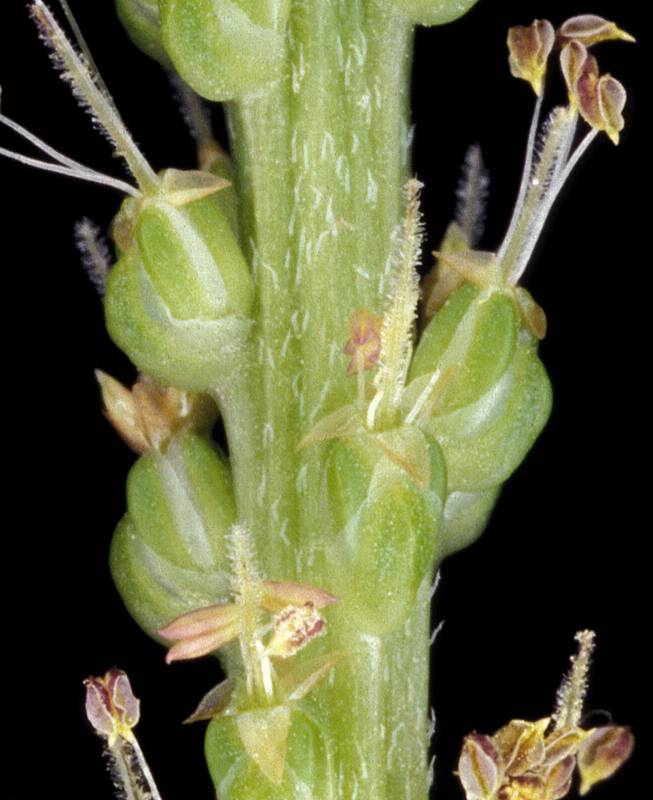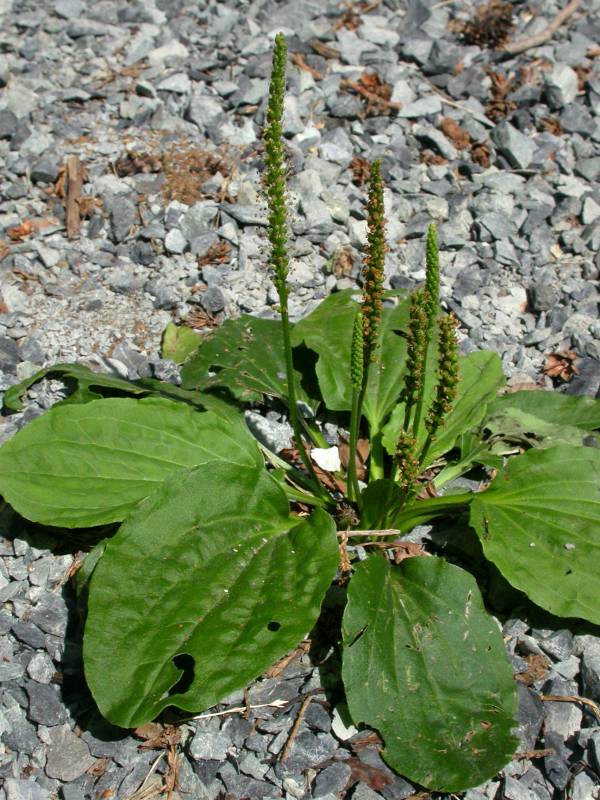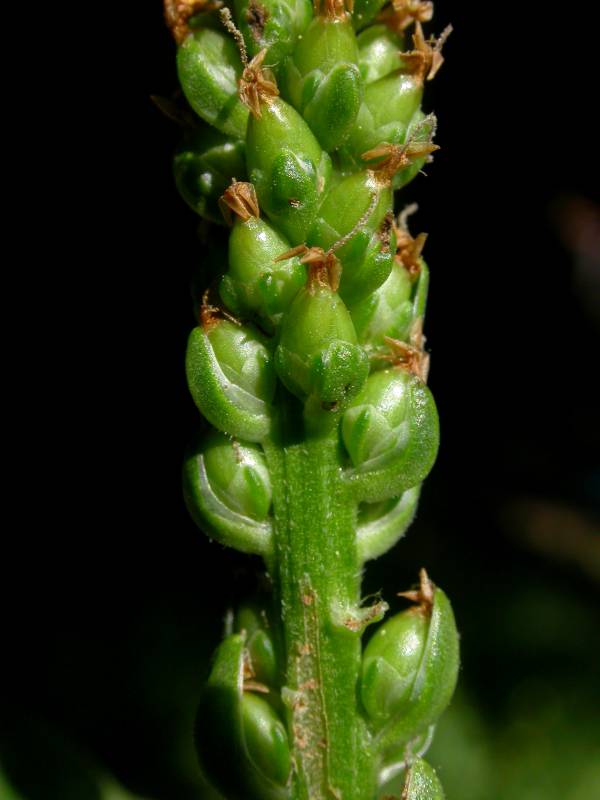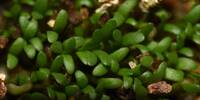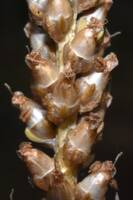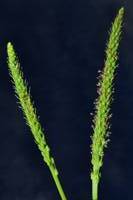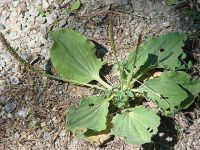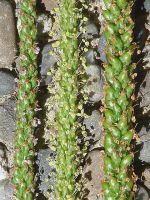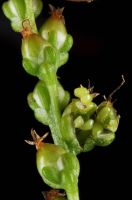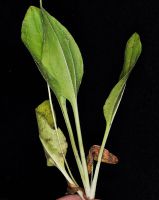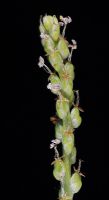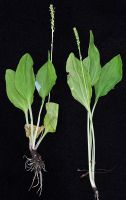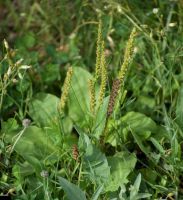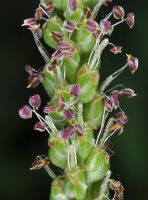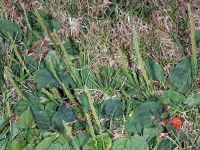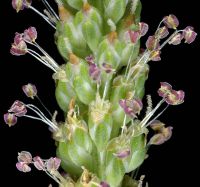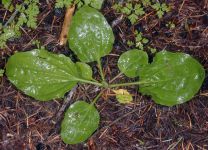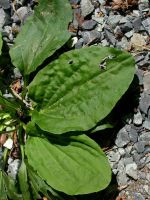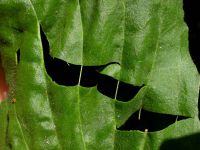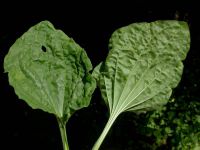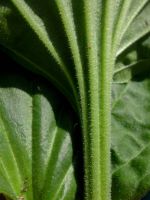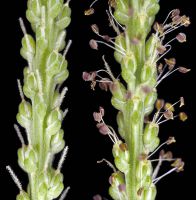Distribution: Occurring on both sides of the Cascades crest in Washington; Alaska to California, east across North America to the Atlantic Coast.
Habitat: Roadsides, fields and other disturbed, open areas.
Flowers: April-August
Origin: Introduced from Europe
Growth Duration: Perennial
Conservation Status: Not of concern
Pollination: Wind
Fibrous-rooted perennial from a short, stout, woody base, mostly glabrous, not woolly at the crown; scapes 5-25 cm. long.
Leaves all basal, the broadly elliptic to broadly ovate blade contracted abruptly to the petiole, entire or irregularly toothed, 4-18 cm. long and 2.5-11 cm. wide, strongly 3- to several-nerved.
Inflorescence a dense, bracteate, narrow spike, 5-30 cm. long, glabrous; bracts broad, thin-margined, 2-4 mm. long; calyx 4-lobed; 4 corolla lobes 1 mm. long, reflexed; stamens 4, exerted; ovary superior, 2-celled.
Capsule 2.5-4 mm. long.
Publication: Sp. Pl. 1: 112-113. 1753.
Plantago major L. var. pachyphylla Pilg. [HC]
PNW Herbaria: Specimen records of Plantago major in the Consortium of Pacific Northwest Herbaria database
WA Flora Checklist: Plantago major checklist entry
OregonFlora: Plantago major information
E-Flora BC: Plantago major atlas page
CalPhotos: Plantago major photos

